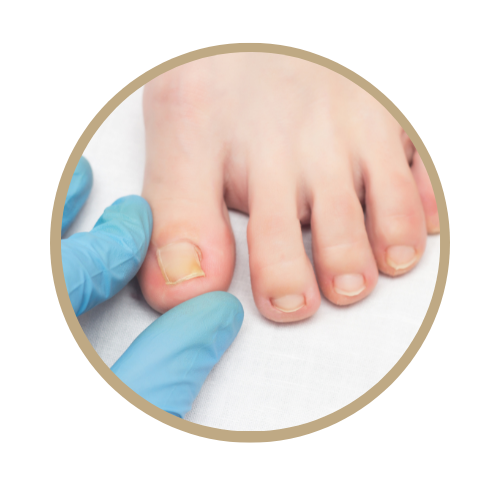Ancaster Foot Fixer and Orthotics Clinic
Ingrown Nails
Ingrown Nails
Ingrown toenails, also known as onychocryptosis, occur when the edges or corners of a toenail grow into the surrounding skin, leading to pain, inflammation, and potential infection. This condition most commonly affects the big toe but can occur in any toenail. Here's an explanation of what ingrown toenails are and their common causes:
Causes of Ingrown Toenails:
-
Improper Nail Trimming: One of the most common causes of ingrown toenails is cutting the nails improperly. Nails that are trimmed too short or those with rounded edges are more likely to dig into the surrounding skin.
-
Tight or Ill-Fitting Footwear: Wearing shoes that are too tight or narrow can compress the toes and force the toenails to grow into the surrounding skin. High-heeled shoes can also contribute to ingrown toenails by placing increased pressure on the toes.
-
Injury or Trauma: Stubbing the toe or any other injury that damages the nail bed or surrounding tissue can lead to the development of ingrown toenails.
-
Genetic Predisposition: Some individuals may be genetically predisposed to having curved toenails, increasing the likelihood of ingrown toenails.
-
Poor Foot Hygiene: Inadequate foot hygiene, such as not keeping the feet clean or failing to wash the feet regularly, can contribute to the development of ingrown toenails.
-
Abnormal Nail Shape: Certain conditions, such as involuted nails (nails that are curved inward), can make individuals more prone to ingrown toenails.
-
Underlying Medical Conditions: Conditions like fungal infections, which can thicken and distort the nails, or conditions that affect nail growth, can contribute to the development of ingrown toenails.
Common Symptoms of Ingrown Toenails:
-
Pain and Tenderness: Ingrown toenails often cause pain and tenderness along the sides of the affected toenail.
-
Redness and Swelling: The skin around the ingrown toenail may become red, swollen, and inflamed.
-
Infection: If left untreated, ingrown toenails can lead to infection, which may result in pus, increased pain, and the development of an abscess.
-
Difficulty Walking: Severe ingrown toenails can make walking or wearing shoes uncomfortable.


